
Homeless in Hong Kong: a cycle of despair for evicted street sleepers with few places to go but back to the streets
Nguyen Van Son and his neighbours on a footbridge in Sham Shui Po, Hong Kong’s poorest district, have limited options after packing up their shelters: a subdivided flat, a ‘coffin home’, or another street berth
Nguyen Van Son is accustomed to rising with the sun. When you’re homeless, he says, if the light doesn’t wake you, the heat will.
But when the sun comes up over the footbridge Nguyen calls home on a recent morning, the 63-year-old hasn’t slept at all. Instead, he has spent the night breaking apart the makeshift hut where he has slept for the past 15 months in Hong Kong’s Sham Shui Po district.

Nguyen has removed the hut’s canopy of blankets, disassembled its bamboo frame, stripped the sheets from his camp bed and packed his belongings into two suitcases. City officials will be there soon, and Nguyen wants to be ready to leave when they arrive.
After more than 450 nights on the footbridge that spans Yen Chow Street, Nguyen is being evicted.
He is one of a dozen homeless people who, five weeks earlier, were ordered to leave by the Sham Shui Po District Office. Officials routinely conduct clearances when homeless encampments violate laws and elicit complaints from the community. But at a time when homelessness is on the rise in Hong Kong – and when affordable housing options are in short supply – homeless people and advocates for them say the clearances leave the homeless with just one less place to go in a city with few options.
“I wish I could stay on the bridge,” says Nguyen, who moved to Hong Kong from Vietnam as a teenager in search of work. “It is the most comfortable place I have found.”
We are focused too much on property in Hong Kong. If a person doesn’t pay rent, it is like they have no value.
Sham Shui Po is Hong Kong’s poorest district and, when you look around the Yen Chow Street footbridge, a beige flyover in view of many high-rise apartment buildings, it shows. Before the clearance the bridge is littered with mattresses, flattened cardboard boxes, and improvised tents. Nearby, plywood shacks line the underside of an elevated highway. Next to the footbridge, more homeless people have made camp in a public park.
According to a government survey released this year, the most common reason for people being homeless in Hong Kong is their inability to pay rent because they are unemployed. Others have difficulty finding long-term work following prison sentences. For Nguyen, both problems are a factor.
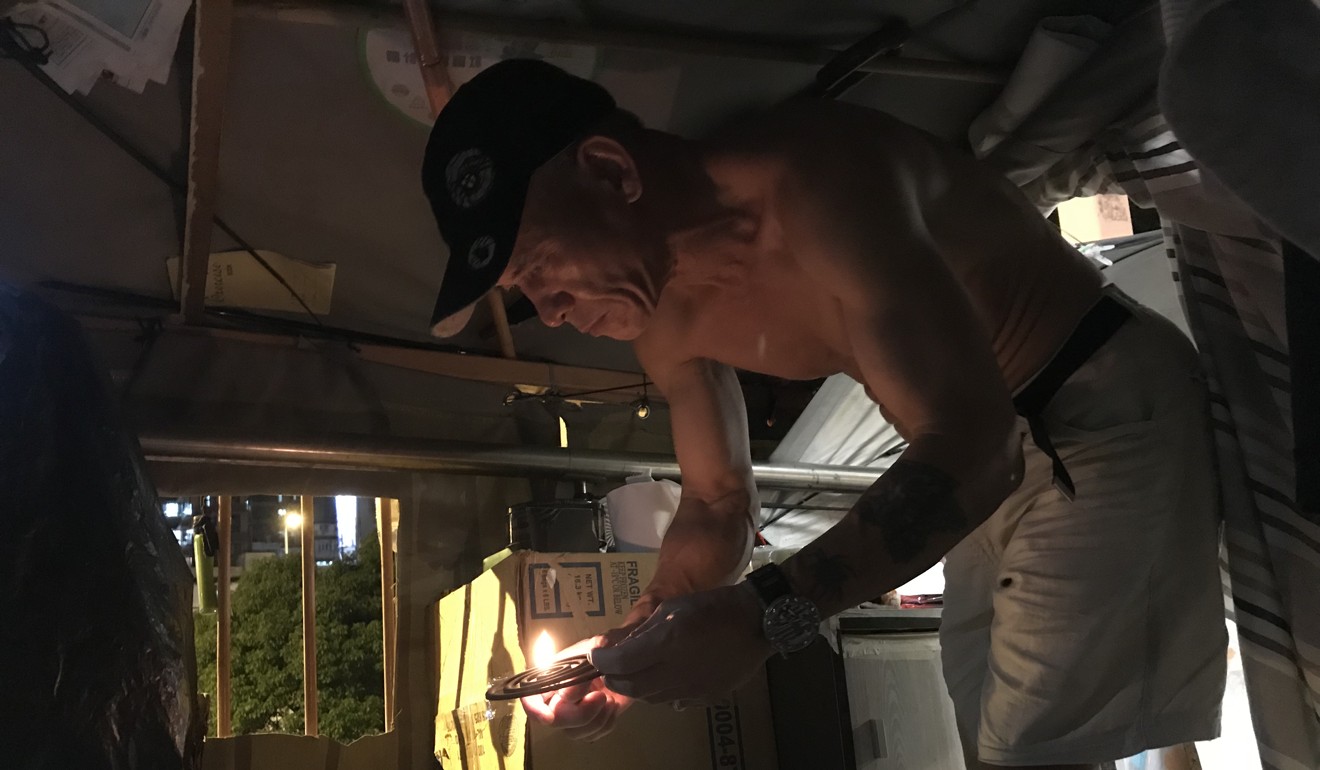
In the 2000s, Nguyen began having trouble finding the sort of physically demanding work he did when he was younger, such as laying floors and delivering home appliances. To make ends meet, he started selling smuggled cigarettes, leading to an arrest in 2006.
Street sleepers plead for more time at footbridge as clearance looms
Nguyen was thereafter jailed five times for repeat offences, straining his relationship with his wife and two daughters. After being released from his last and longest stint, of six months, he was determined to leave selling smuggled goods behind.
In 2013, separated from his family, Nguyen found a small flat in Sham Shui Po for HK$1,900 a month. In the space of a few years, however, the rent rose to HK$5,400 a month. With regular work harder to come by than ever, Nguyen found himself unable to keep up. By 2016, homelessness was inevitable.
Nguyen’s lack of options are emblematic of the challenges faced by Hong Kong’s street sleepers, says Ng Wai-tung, an advocate for the homeless with the Society for Community Organisation (Soco), an NGO. Ng says there has not been enough focus on the development of sustainable paths for helping people transition out of homelessness.
“We are focused too much on property in Hong Kong,” Ng says. “If a person doesn’t pay rent, it is like they have no value.”
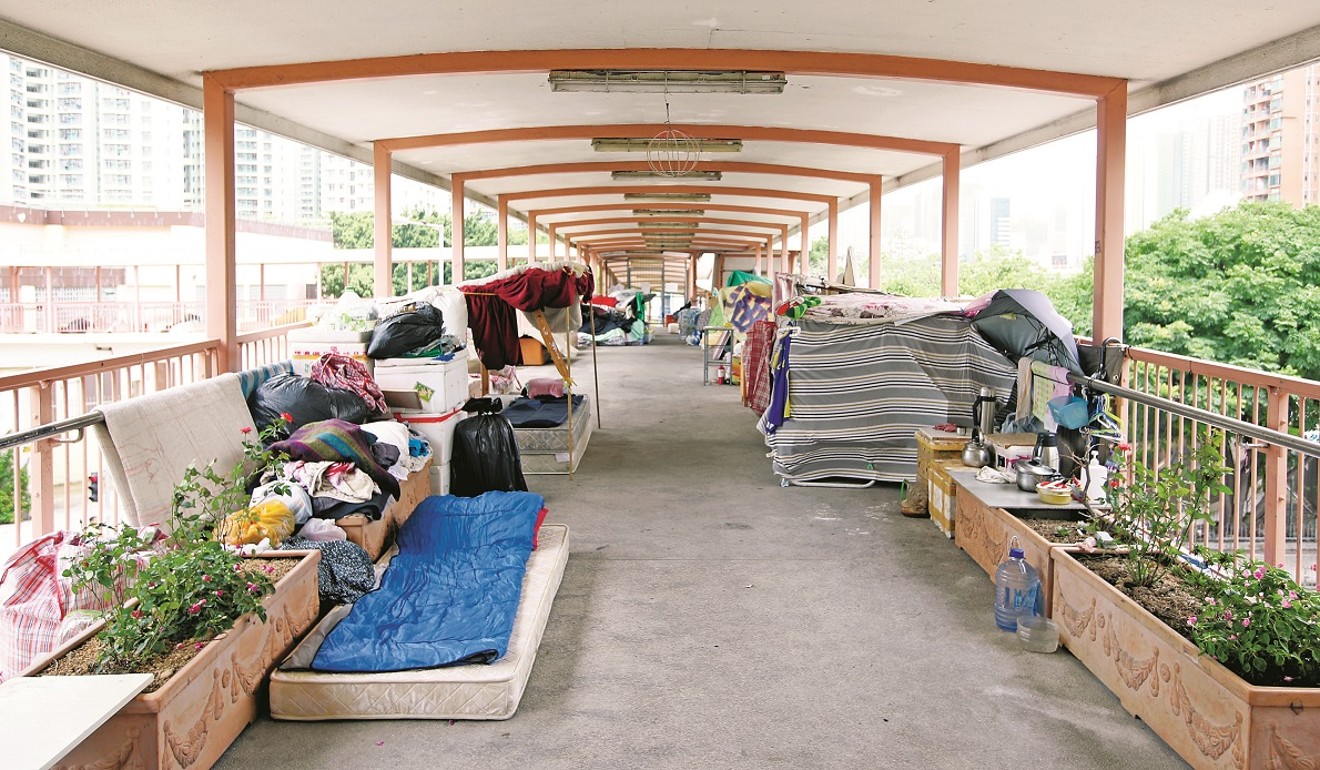
There are three conventional ways for getting off the streets, according to Soco.
The first is to find space in a subdivided flat, where units 10 metres square (108 sq ft), with room for little more than a bed and a desk, average HK$4,500 (US$575) per month in Kowloon – or in one of the city’s infamously grim “coffin homes” – a two-square-metre cubicle that can cost more than HK$2,000 (US$250) per month.
Being homeless and over 60, Nguyen receives HK$3,485 (US$444) per month in public assistance. If he found a place, he would qualify for HK$1,835 (US$233) more at most, but even this would not be enough to take care of food and other needs after the rent has been paid.
As for “coffin homes”, Nguyen tried living in one when he became homeless. He found the tiny cubicle was hot and dark, and the common spaces were rife with bugs and drugs. After two nights, Nguyen decided he was better off on the street, where at least he could catch a breeze.
I wish I could stay on the bridge. It is the most comfortable place I have found.
Another option for those seeking shelter are dormitories subsidised by the government or NGOs, which can host 222 and 320 people in total, respectively. The length of stay, however, is limited to six months for government-subsidised dormitories and between one and three months for NGO-subsidised ones – usually not enough time for a homeless person to turn their financial situation around, according to Ng. When people leave, it is often only to return to the street.
Most homeless people have registered to receive public housing, but this is the least reliable option for escaping homelessness given the notoriously long waiting list. Nguyen applied two years ago and probably has three more years to wait. Some people can wait 20 years for a public housing flat.
With few options, Nguyen decided to take being homeless in his stride. “Once you start to focus on what you have, you realise you have nothing,” Nguyen says. “You just can’t think about that.”
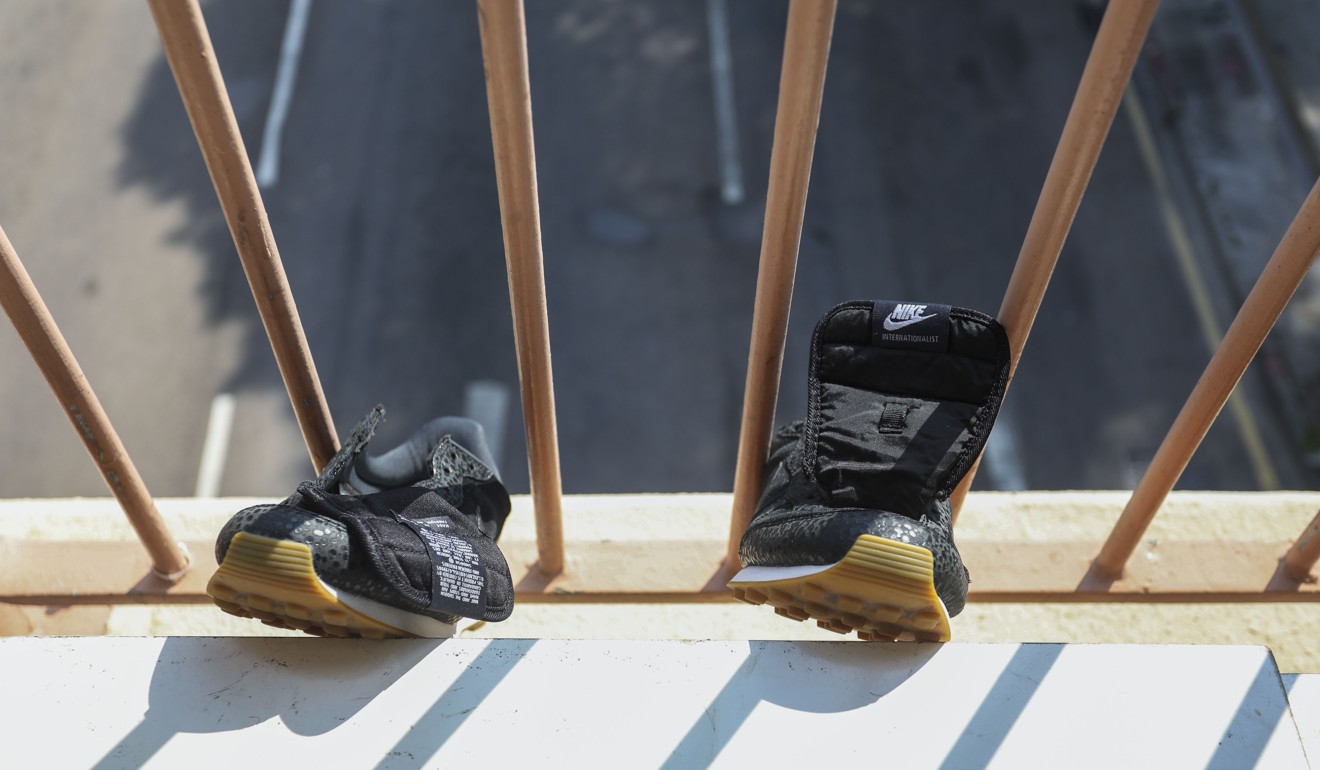
When Nguyen settled on the Yen Chow Street footbridge in early 2017, he found a comfortable spot along the railing. He used cardboard, plastic rubbish bags, and a broken umbrella to block out the elements. In the cardboard, he cut a window to allow airflow. He began tending to neglected plants in a pair of planter boxes next to his hut. He used scissors to prune them and watered them daily with a handmade watering bucket: a plastic bottle with small holes poked in the lid.
For restaurant owner, fixing society is like fixing a wok – one hole at a time
Nguyen liked the footbridge. It was quiet, and the others squatting there were close to his age. In time, he began to feel at home.
But in the city’s eyes, his hut was a nuisance.
According to Sham Shui Po District Office representatives, the structures on the footbridge are illegal and pose a threat to traffic below, because their height often exceeds that of the railings. More crucially, officials say, the homeless cluster constitutes a public health risk. People who live in the area have complained of illegal drug use and of the homeless relieving themselves on or around the bridge. In April, they add, two homeless men on the bridge were found dead.
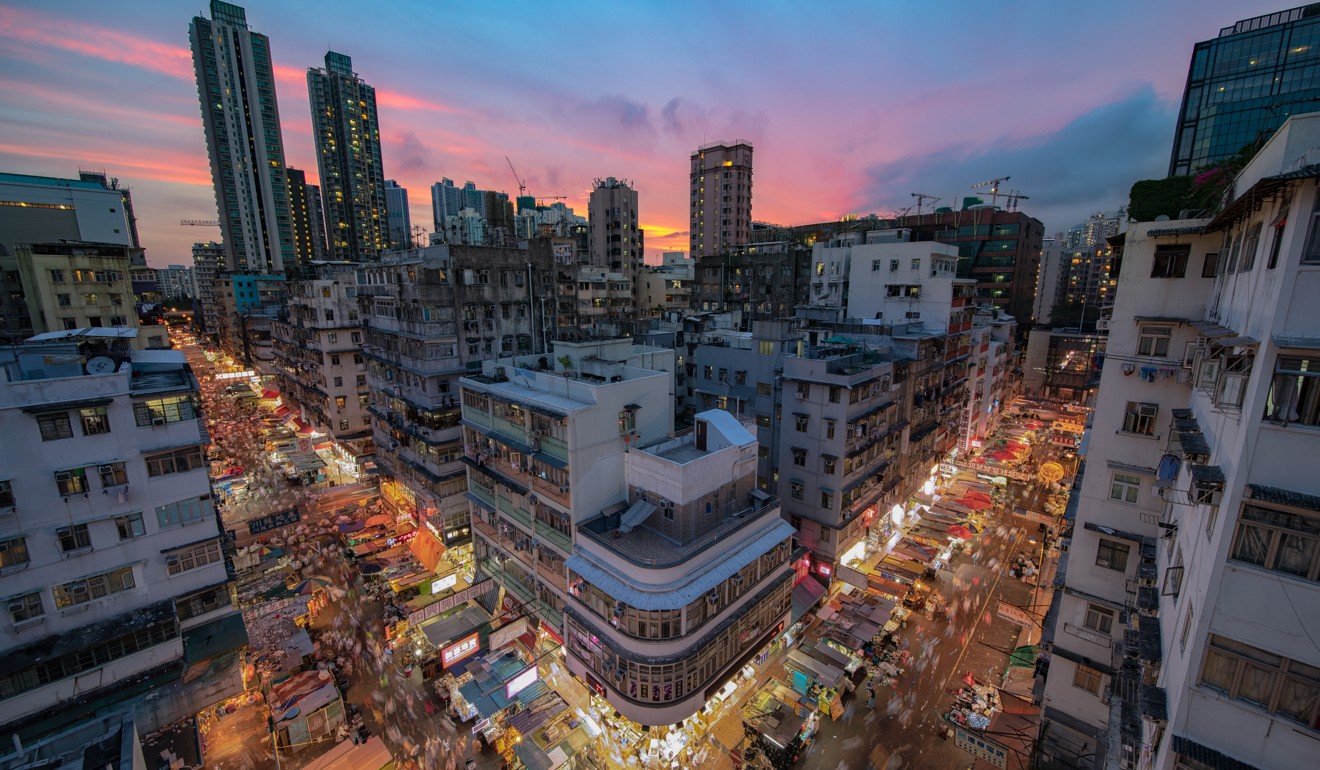
On June 8, the district office told occupants they had until July 12 to leave. The men, along with Soco volunteers, petitioned for the clearance to be delayed, but their request was denied.
If you just evacuate the homeless people, the problem does not diminish. The homeless people will just find somewhere else to stay.
“The general public expects the government to expedite action in tackling the problems caused by street sleepers on the footbridge,” a district office representative tells the Post on the day of the clearance.
Wong Hung, an associate professor in the Chinese University of Hong Kong’s department of social work who has studied homelessness for nearly two decades, said such clearances are standard, in that homelessness is treated primarily as a matter of public safety and hygiene. Clearances will only necessitate future clearances, Wong said, until government efforts focus instead on serving the social needs of street sleepers, such as work, rehabilitation and counselling.
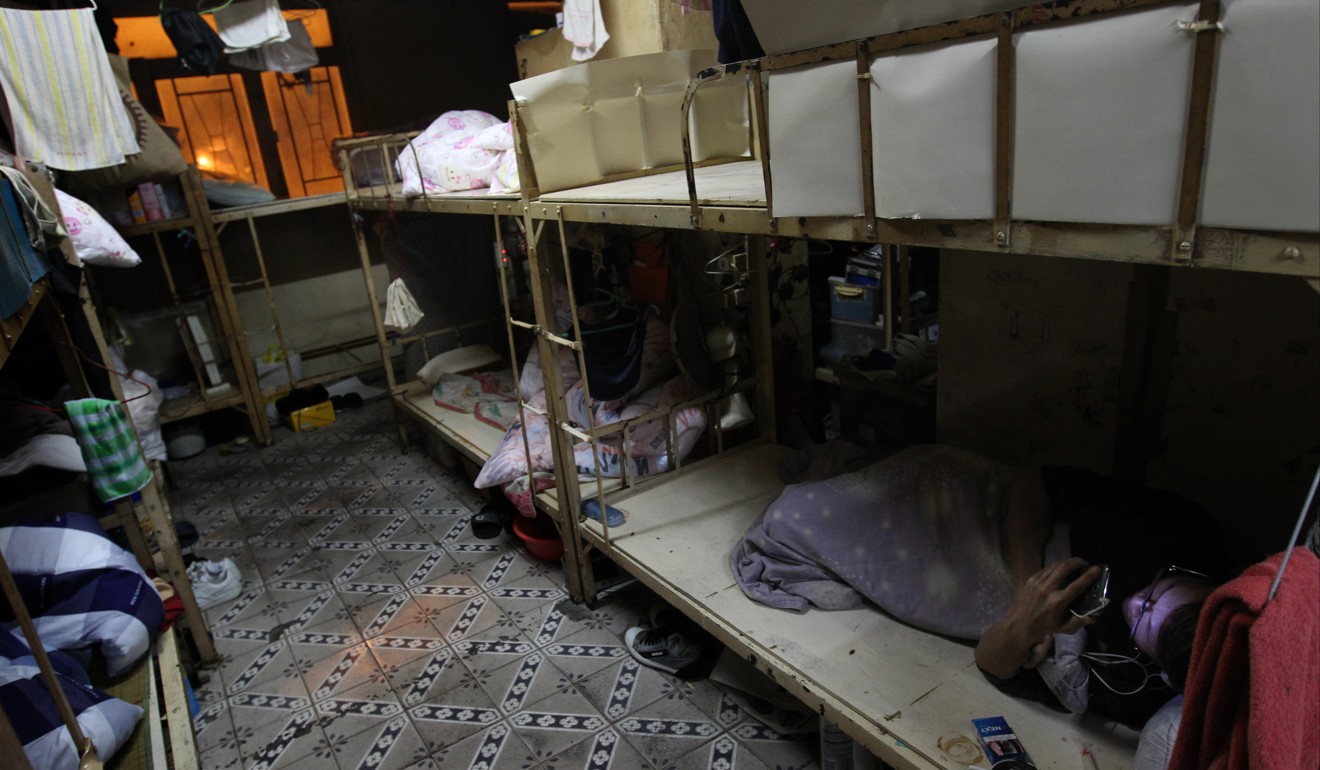
“If you just evacuate the homeless people, the problem does not diminish,” Wong says. “The homeless people will just find somewhere else to stay.”
On his last morning at the footbridge, Nguyen tidies up the area where he used to sleep. Using a broom, he sweeps into a pile snips of the yellow ribbon that bound together his hut’s bamboo frame. He complains about those who left without cleaning: much of the footbridge is still covered in detritus.
Nguyen is among the last to leave. Nearby, two other men who have yet to gather their belongings clean their faces and brush their teeth from a jug of water. One complains that no matter who he talks to – NGOs, Christian groups, journalists – nothing in Hong Kong ever changes.
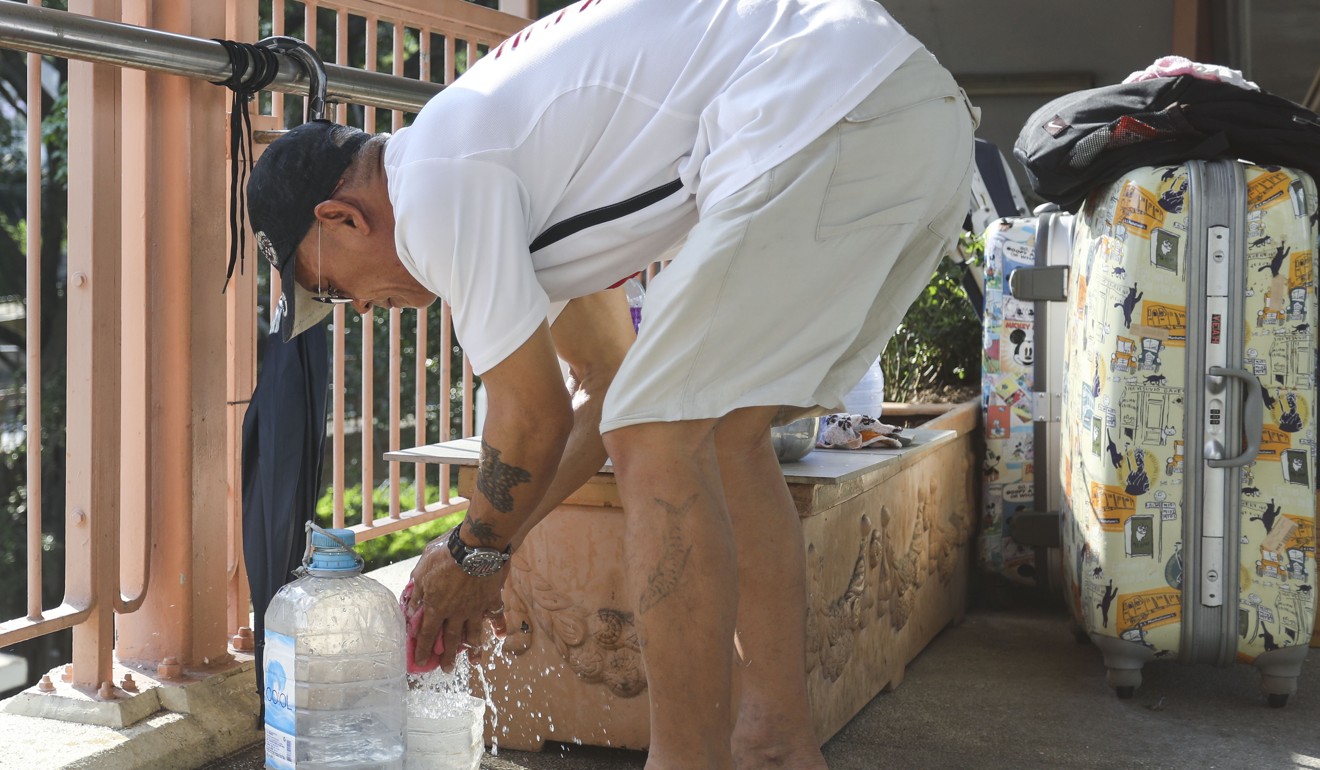
The government says many of those who slept on the footbridge have found places in a subdivided unit or dormitory. Soco representatives say others will probably find another street to sleep on, perhaps preferring the self-determination.
That’s Nguyen’s choice, for now. That night, he says, he will sleep in the park next to the footbridge. He has slept there before, but was harassed by a group of younger homeless men, an incident which led him to the footbridge in the first place.
“After that,” Nguyen says, “I don’t know where to go.”
Before leaving, Nguyen waters the plants. He says he will return to the bridge to tend to them in the coming days, but he worries what will happen to them when he is gone.


